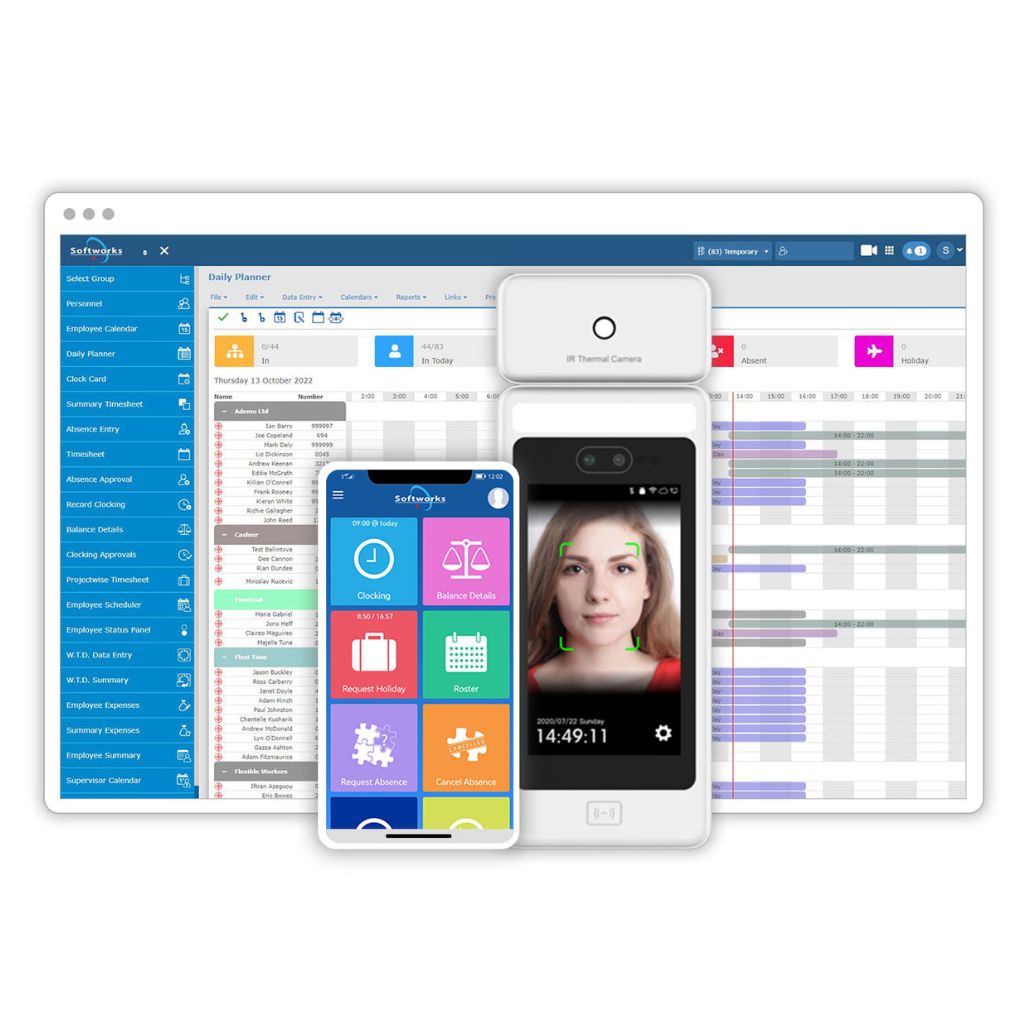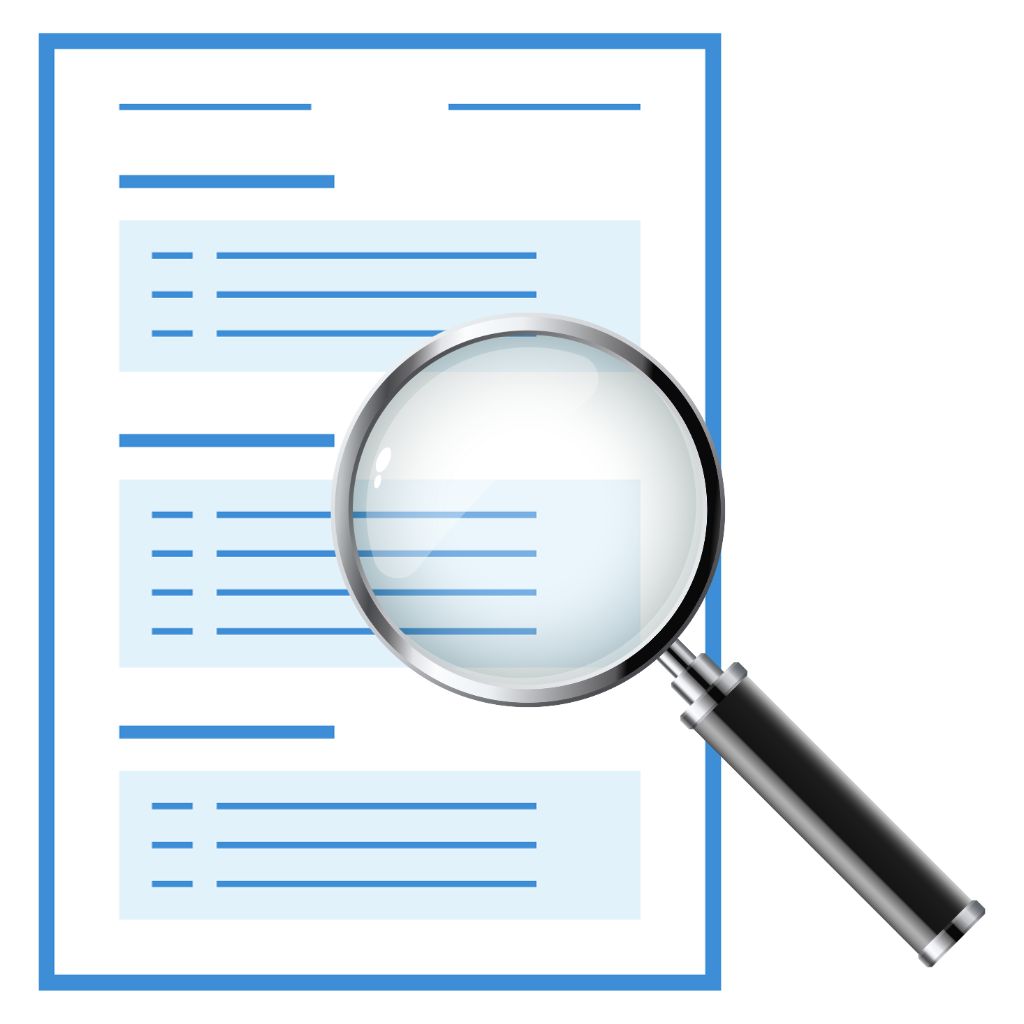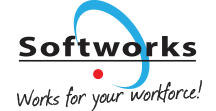In the dynamic world of business, the significance of employee attendance cannot be overstated. It stands as a cornerstone, not just for day-to-day operations, but for the long-term health and success of any organization. Regular attendance is more than a mere expectation; it’s a critical component that fuels the engine of productivity and efficiency in the workplace.
At Softworks, we understand that every employee’s presence counts. When team members consistently show up, it creates a reliable and stable environment, allowing for seamless collaboration, timely project completion, and a steady flow of creative and operational input. In contrast, poor attendance can send ripples through an organization, disrupting workflows, burdening colleagues with additional tasks, and ultimately, affecting the bottom line.
Absenteeism does more than just slow down work processes; it can significantly impact workplace morale. Employees who are regularly present often find themselves compensating for absent colleagues, which can lead to frustration, decreased job satisfaction, and even burnout. This not only strains the team dynamics but also poses a risk to the overall workplace culture, potentially leading to a cycle of further absenteeism and decreased engagement.
In the following sections, we’ll delve into the multifaceted approaches to improving employee attendance. From understanding the root causes of absenteeism to leveraging the power of workforce management software, like the solutions offered by Softworks, we aim to provide you with a comprehensive guide. Our goal is to help you create a more engaged, productive, and happy workforce, where every day counts towards collective and individual success.
TABLE OF CONTENTS
- Understanding the Root Causes of Poor Attendance
- Effective Communication Strategies
- Leveraging Technology for Attendance Management
- Employee Incentives and Recognition Programs
- Flexible Work Arrangements
- Training and Support for Managers
- Addressing Personal and Health-Related Issues
- Regular Review and Adaptation of Attendance Policies
Understanding the Root Causes of Poor Attendance
To effectively tackle the problem of poor attendance, it is crucial to first understand its root causes. Absenteeism in the workplace is often a symptom of deeper, underlying issues that need to be addressed. These causes can range from personal challenges faced by employees to broader organizational factors.

Common Factors Contributing to Absenteeism
1. Personal Health and Well-being: Health issues, whether acute or chronic, are a primary reason for employee absences. This includes not only physical health but mental and emotional well-being as well.
2. Work-Life Balance Struggles: In today’s fast-paced world, balancing work with personal life, family responsibilities, and leisure can be challenging. Employees who struggle to maintain this balance may find themselves needing time away from work.
3. Lack of Engagement or Job Satisfaction: Employees who are disengaged or dissatisfied with their jobs are more likely to have higher absenteeism rates. This disengagement can stem from a variety of factors, including lack of recognition, limited growth opportunities, or misalignment with the company’s values.
4. Workplace Stress and Burnout: High-stress environments and excessive workloads can lead to burnout, causing employees to take time off to recover.
5. Transportation and Commuting Issues: Challenges with reliable transportation or long, strenuous commutes can also contribute to attendance issues.
The Role of Workplace Culture in Attendance
Workplace culture plays a pivotal role in influencing employee attendance. A positive, supportive, and inclusive culture can motivate employees to be present and engaged. Conversely, a toxic or unsupportive workplace environment can lead to higher absenteeism.
Key aspects of workplace culture that impact attendance include:
1. Leadership and Management Styles: The approach of leadership and management towards employees significantly affects their attendance. Supportive and understanding leadership can encourage better attendance.
2. Peer Relationships: Strong, positive relationships among colleagues can create a sense of belonging and commitment, encouraging regular attendance.
3. Recognition and Reward Systems: Cultures that recognize and reward consistent attendance and hard work can motivate employees to be more present.
4. Communication and Feedback Channels: Open and transparent communication, along with constructive feedback mechanisms, helps employees feel valued and heard, reducing absenteeism.
5. Health and Wellness Initiatives: A culture that prioritizes employee health and wellness, both physical and mental, can lead to improved attendance.
Understanding these root causes is the first step in developing effective strategies to improve employee attendance, foster a positive workplace culture, and ultimately drive organizational success.
Effective Communication Strategies
Effective communication is vital in managing employee attendance. The cornerstone of this approach is the establishment of clear and comprehensive attendance policies. These policies should not only outline the expectations for attendance but also provide guidance on how absences are managed and recorded. Clarity in these policies helps prevent misunderstandings and ensures that all employees are on the same page regarding what is expected of them.

Key Elements of Effective Attendance Policies
1. Specificity: Policies should clearly define what constitutes acceptable and unacceptable attendance, including tardiness and leaving early.
2. Procedures for Reporting Absences: Clearly outline the steps employees must take to report an absence, including whom to contact and the acceptable timeframe for notification.
3. Consequences of Policy Violations: Detail the consequences of not adhering to the attendance policy, ensuring these are fair and consistently applied.
4. Flexibility and Fairness: While maintaining consistency, the policy should also allow for flexibility in legitimate cases like emergencies or health issues.
Once the attendance policies are established, the next crucial step is effectively communicating these to the employees. This ensures everyone understands what is expected of them and the importance of adhering to these policies.
Strategies for Effective Communication
1. Initial Orientation and Training: Introduce the attendance policy during the onboarding process, ensuring new employees understand these expectations from the start.
2. Regular Reminders: Regularly remind employees of the attendance policies through meetings, emails, or internal newsletters. This keeps the information fresh and top-of-mind.
3. Open Dialogue: Encourage an environment where employees feel comfortable discussing attendance issues. This open dialogue can help identify and address potential problems early.
4. Lead by Example: Management should lead by example, adhering to the same attendance standards expected of their team members.
5. Feedback and Recognition: Provide positive feedback and recognition to employees who consistently meet attendance expectations. This can reinforce the importance of regular attendance.
By establishing clear policies and effectively communicating them, organizations can create a framework that supports regular attendance. This not only helps in maintaining operational efficiency but also fosters a culture of responsibility and respect for workplace norms.
Leveraging Technology for Attendance Management
In today’s digital age, technology plays a pivotal role in streamlining various business processes, including attendance management. Workforce Management Software emerges as a powerful tool, transforming how organizations track and manage employee attendance. These sophisticated systems offer far more than just timekeeping; they provide comprehensive solutions that aid in improving overall attendance management.

Features of Workforce Management Software
1. Automated Timekeeping: Automated systems replace manual time tracking, reducing errors and saving administrative time.
2. Real-Time Attendance Monitoring: Managers can monitor attendance as it happens, allowing for immediate responses to staffing issues or unexpected absences.
3. Data Analytics and Reporting: The software provides analytics on attendance trends, offering insights for making informed decisions.
4. Integration with Payroll Systems: A key feature is the integration with payroll systems, ensuring accurate and efficient processing of employee hours for payroll, which enhances accuracy and reduces administrative burdens.
How Softworks’ Solutions Enhance Attendance Management
Softworks Workforce Management Software is tailored to meet the unique challenges of managing employee attendance. Our solutions combine ease of use with powerful features, aiding organizations in effectively overseeing employee attendance.
Benefits of Using Softworks’ Solutions
1. Simplified Attendance Tracking: Our software streamlines the process of tracking employee hours, ensuring accuracy and compliance with labor regulations.
2. Flexible Scheduling: Tools for flexible scheduling are included, accommodating various work patterns and shifts to improve employee satisfaction and attendance.
3. Employee Self-Service App and Portal: The Self-service App and Portal empower employees to manage their schedules, request time off, and report absences, promoting autonomy and responsibility.
4. Customizable Alerts and Notifications: The system sends alerts about attendance issues, enabling timely management actions.
5. Improved Policy Enforcement: Consistent application and enforcement of attendance policies are facilitated by the system.
Softworks Workforce Management Software not only efficiently tracks attendance but also offers insights and tools to improve employee attendance. Our solutions are designed to help businesses cultivate a more productive and reliable workforce.
Employee Incentives and Recognition Programs
Employee incentives and recognition programs play a crucial role in encouraging regular attendance. When employees feel valued and recognized for their consistent presence, it not only boosts their morale but also fosters a culture of reliability and commitment in the workplace.

Types of Incentives that Encourage Regular Attendance
1. Attendance Bonuses: Financial incentives, such as bonuses or additional paid time off, can be awarded to employees who meet or exceed attendance goals.
2. Performance-Based Rewards: Linking attendance with performance reviews and rewards can motivate employees to maintain regular attendance.
3. Employee of the Month Programs: Recognizing an employee each month for exemplary attendance can foster a competitive yet positive environment.
4. Discounts and Gift Cards: Offering discounts on company products or services, or gift cards to local businesses, can be an effective incentive.
5. Extra Flexibility: Granting flexible scheduling options or the ability to work from home to maintain good attendance can be highly motivating.
Recognizing and Rewarding Consistent Attendance
Beyond tangible incentives, recognition of employees’ efforts in maintaining regular attendance is equally important. Here are some ways to recognize and reward consistent attendance:
1. Public Acknowledgment: Recognizing employees in team meetings or through company-wide communications can boost their morale and set a positive example for others.
2. Certificates or Awards: Presenting certificates or awards for excellent attendance records can be a meaningful gesture of appreciation.
3. Celebration Events: Hosting events or small gatherings to celebrate collective attendance achievements can enhance team spirit.
4. Personalized Thank Yous: Personalized notes or messages of thanks from management can make employees feel valued and appreciated.
5. Career Advancement Opportunities: Offering opportunities for career advancement or professional development to those with exemplary attendance records can be a powerful motivator.
Implementing these incentives and recognition programs can significantly improve employee attendance. When employees see that their efforts are noticed and appreciated, they are more likely to feel engaged and committed to maintaining a good attendance record. This not only benefits the individual but also contributes to the overall productivity and success of the organization.
Flexible Work Arrangements
In the contemporary workplace, flexible work arrangements are becoming increasingly important in improving employee attendance. Flexibility in scheduling and work locations can significantly impact employees’ ability to balance their work and personal lives, leading to reduced absenteeism and increased job satisfaction.

The Role of Flexibility in Improving Attendance
Flexibility can address many of the root causes of poor attendance. For employees juggling personal responsibilities or facing long commutes, flexible work options can be the key to maintaining regular attendance. Additionally, offering flexibility can boost morale and job satisfaction, which in turn encourages employees to be more present and engaged.
Examples of Flexible Work Schedules
1. Telecommuting or Remote Work: Allowing employees to work from home or a remote location, either full-time or on certain days, can reduce the stress and time associated with commuting.
2. Flextime: This arrangement allows employees to choose their start and end times within agreed-upon limits, giving them control over their work hours.
3. Compressed Workweeks: Employees work the standard number of weekly hours in fewer days, such as four ten-hour days instead of five eight-hour days.
4. Part-Time Work: Offering part-time positions or reduced hours can accommodate employees who are unable to commit to full-time work due to personal reasons.
5. Shift Swapping: Allowing employees to swap shifts with each other, with managerial approval, can provide flexibility while ensuring that work shifts are covered.
6. Job Sharing: Two or more employees share the responsibilities of one full-time position, splitting the hours and work tasks.
By implementing flexible work arrangements, companies can create a more adaptable and employee-friendly work environment. This flexibility not only helps employees manage their personal and professional responsibilities more effectively but also demonstrates the organization’s commitment to their well-being. As a result, employees are likely to be more loyal, motivated, and present, which positively impacts the overall productivity and success of the business.
Learn more: Flexible Working Management with Softworks
Training and Support for Managers
Effective management of employee attendance is not solely the responsibility of HR; it also requires the active involvement of managers. Providing managers with the right tools and training is essential for handling attendance issues effectively and motivating teams to maintain good attendance records.

Equipping Managers with Tools to Handle Attendance Issues
1. Training on Attendance Policies: Managers should be thoroughly trained on the company’s attendance policies. This includes understanding the procedures for reporting and managing absences and the steps to take in case of policy violations.
2. Conflict Resolution Skills: Training in conflict resolution can equip managers to handle disputes or grievances related to attendance issues.
3. Use of Attendance Management Software: Familiarizing managers with attendance management software can help them track and analyze attendance patterns and identify potential issues early.
4. Communication Techniques: Effective communication skills training can enable managers to discuss attendance issues with employees in a constructive and empathetic manner.
5. Legal and Ethical Considerations: Understanding the legal aspects of attendance management, including labor laws and ethical considerations, is crucial for managers.
Strategies for Managers to Motivate Their Teams
1. Setting Clear Expectations: Managers should clearly communicate attendance expectations to their teams, ensuring everyone understands the importance of regular attendance.
2. Recognizing Good Attendance: Publicly acknowledging and rewarding good attendance can motivate employees and set a positive example for the team.
3. Creating a Supportive Team Environment: Encouraging a team culture where peers support each other’s attendance and workloads can create a more cohesive and responsible team.
4. Offering Flexibility Where Possible: When feasible, providing flexible working options can improve attendance and job satisfaction.
5. Lead by Example: Managers should model the attendance and punctuality they expect from their team members.
6. Regular Check-ins and Feedback: Holding regular meetings to discuss attendance and address any concerns can help prevent potential issues from escalating.
By equipping managers with the necessary tools and strategies, organizations can effectively address attendance issues at the team level. Well-trained managers are better prepared to motivate their teams, handle challenges, and contribute to creating a positive work environment that encourages regular attendance.
Addressing Personal and Health-Related Issues
An integral part of managing attendance effectively involves addressing personal and health-related issues that employees may face. Offering support for these challenges not only helps in reducing absenteeism but also demonstrates the organization’s commitment to the overall well-being of its employees.

Supporting Employees with Health or Personal Challenges
1. Employee Assistance Programs (EAPs): Implementing EAPs can provide employees with confidential counseling services for mental health, stress, family issues, and more.
2. Flexible Leave Policies: Creating flexible leave policies for health or personal issues allows employees to take the time they need without the stress of potential job loss.
3. Open Communication Channels: Encouraging open communication about personal or health challenges can help managers understand and support employees’ needs.
4. Reasonable Accommodations: Making reasonable accommodations for employees with health conditions or disabilities can enable them to continue contributing effectively to the workplace.
5. Supportive Return-to-Work Programs: For employees returning from extended leave, supportive return-to-work programs can ease their transition back into the workforce.
Implementing Wellness Programs
Wellness programs are essential in promoting employees’ physical and mental health, which can, in turn, improve attendance.
1. Health Screenings and Fitness Programs: Offering regular health screenings and promoting fitness programs can encourage healthier lifestyles among employees.
2. Mental Health Initiatives: Including mental health resources and initiatives in wellness programs can address issues like stress, anxiety, and depression, which are common causes of absenteeism.
3. Work-Life Balance Strategies: Programs that help employees balance their personal and professional lives can reduce stress and improve overall well-being.
4. Nutrition and Healthy Eating Campaigns: Educating employees about nutrition and offering healthy eating options at work can contribute to their overall health.
5. Regular Wellness Activities: Organizing regular wellness activities, such as yoga sessions, mindfulness workshops, or team sports, can foster a culture of health and wellness.
By addressing personal and health-related challenges and implementing comprehensive wellness programs, organizations can create a supportive environment that values employee health and well-being. This not only aids in reducing absenteeism but also enhances employee engagement and productivity, contributing to a healthier, more vibrant workplace.
Regular Review and Adaptation of Attendance Policies
Attendance policies, like any other aspect of workplace management, should not be static. Regular review and adaptation of these policies are crucial to ensure that they remain relevant, effective, and aligned with the evolving needs of both the organization and its workforce.

The Importance of Policy Reviews
1. Staying Current with Legal Requirements: Regular reviews help ensure that attendance policies comply with changing labor laws and regulations.
2. Addressing Workforce Dynamics: As the workforce demographics and preferences change, attendance policies may need to be updated to reflect these shifts, ensuring they remain fair and applicable to all employees.
3. Incorporating Technological Advancements: With the rapid advancement of technology, particularly in workforce management, policy reviews can help integrate new tools and methods for tracking and managing attendance.
4. Responding to Feedback: Regular reviews allow for the incorporation of employee and manager feedback, ensuring the policies are practical and positively received.
Adapting Policies to Changing Workforce Needs
1. Flexibility for Diverse Work Arrangements: Adapting policies to accommodate various work arrangements, such as remote work, flextime, and part-time roles, can help meet the needs of a diverse workforce.
2. Inclusive Policies for Diverse Employee Needs: Ensuring policies are inclusive and considerate of the diverse needs of employees, including those with caregiving responsibilities, health issues, or different life stages.
3. Proactive Adjustments for Industry Trends: Staying ahead of industry trends and norms can keep an organization competitive in terms of attracting and retaining talent.
4. Regular Assessment of Policy Impact: Analyzing the impact of attendance policies on employee morale, productivity, and overall company performance can guide necessary adjustments.
Regularly reviewing and adapting attendance policies is not just about compliance or keeping up with trends; it’s about creating an environment that supports the well-being and productivity of employees. This ongoing process helps in fostering a workplace culture that is both responsive and responsible, ultimately contributing to the organization’s success and employee satisfaction.
Conclusion
In summary, effectively managing employee attendance is a dynamic process that requires a thoughtful blend of policy, technology, and people-focused strategies. By addressing the multifaceted aspects of attendance, organizations can cultivate a more engaged, productive, and satisfied workforce.
Softworks stands ready to support your journey in enhancing attendance management. Our advanced workforce management solutions are designed to streamline your processes, improve compliance, and boost overall workforce efficiency. We invite you to explore how Softworks can transform your attendance management approach, bringing about lasting positive impacts on both your organization and your employees.
Discover the difference Softworks can make in your workforce management—reach out to us for a demo or more information today.
Request a free Demo!
Take the first step towards a complete workforce management solution. Talk to us today!
About Tomislav Rucevic
Tomislav Rucevic, an SEO Specialist at Softworks, stands out as more than just a marketer. He’s a fervent writer and influential thinker passionate about Workforce Management, HR, and work-life dynamics. Holding an MBA in Marketing, Tomislav excels in creating content that delves into the complexities of the modern workplace.
His dedication to writing on these topics is highlighted in his MBA thesis, which examined the link between Employee Motivation and Quality Improvement. At Softworks, he expertly merges his SEO skills with his writing prowess, contributing to the company’s digital success and advancing discussions on enhancing work environments and achieving work-life balance.









